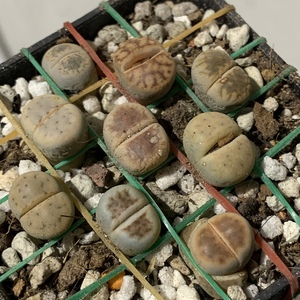植物经验
详细说明
Lithops pseudotruncatella is a clump-forming, succulent perennial up to 2 inches (5 cm) tall, with paired, pale buff leaves, veined and mottled with olive-brown on the tips. Yellow flowers are up to 1.6 inches (4 cm) across and open in late summer and autumn.
Lithops develop a new set of leaves every year, with new leaves emerging in the fall and growing through the winter and into the summer. In late summer, the plant will go dormant and water should be severely restricted to prevent bursting leaves. The flowers appear near the end of summer or fall, first showing up as a small bud forcing its way between the leaves and growth will begin again. It’s safe to water during this period. Heading into the winter, the leaves will still be growing, but you should stop watering, even as the older leaves shrivel up and encase the new growth. In the spring, it’s safe to begin lightly watering again as the plant begins to grow again, heading toward their summer dormancy period and the emergence of new leaves in the fall.
Lithops are very slow growing, small plants, which makes them ideal as houseplants (once you get the hang of their watering schedule). Older plants form attractive clumps of “pebbles” in their pots, which are highly prized. In general, plants should only be repotted if there are cultural problems (soggy soil) or the plant has outgrown its dish container, which will only happen every several years.
Growing Conditions
Light: Lithops thrive in full sunlight, so provide as much light as possible. Weak light will cause elongated leaves and washed out patterns on the leaves.
Water: Lithops have a definite annual cycle that should be carefully followed. In the summer, as the plants are dormant, it is okay to lightly water them if the leaves shrivel. In general, plants should not be watered during their summer dormancy or during the winter.
Temperature: Warm in summer (household temperatures are fine) and colder in winter months (down to 55˚F/13˚C at night).
Soil: Use a cactus mix or very fast-draining potting soil mixed with sand.
Fertilizer: Fertilizer is not necessary.
Propagation
Most Lithops species can be propagated from seeds. Seedlings typically take two to three years to reach maturity and begin flowering.
Repotting
Lithops are very slow growing, small plants, which makes them ideal as houseplants (once you get the hang of their watering schedule). Older plants form attractive clumps of “pebbles” in their pots, which are highly prized. In general, plants should only be repotted if there are cultural problems (soggy soil) or the plant has outgrown its dish container, which will only happen every several years.
Lithops develop a new set of leaves every year, with new leaves emerging in the fall and growing through the winter and into the summer. In late summer, the plant will go dormant and water should be severely restricted to prevent bursting leaves. The flowers appear near the end of summer or fall, first showing up as a small bud forcing its way between the leaves and growth will begin again. It’s safe to water during this period. Heading into the winter, the leaves will still be growing, but you should stop watering, even as the older leaves shrivel up and encase the new growth. In the spring, it’s safe to begin lightly watering again as the plant begins to grow again, heading toward their summer dormancy period and the emergence of new leaves in the fall.
Lithops are very slow growing, small plants, which makes them ideal as houseplants (once you get the hang of their watering schedule). Older plants form attractive clumps of “pebbles” in their pots, which are highly prized. In general, plants should only be repotted if there are cultural problems (soggy soil) or the plant has outgrown its dish container, which will only happen every several years.
Growing Conditions
Light: Lithops thrive in full sunlight, so provide as much light as possible. Weak light will cause elongated leaves and washed out patterns on the leaves.
Water: Lithops have a definite annual cycle that should be carefully followed. In the summer, as the plants are dormant, it is okay to lightly water them if the leaves shrivel. In general, plants should not be watered during their summer dormancy or during the winter.
Temperature: Warm in summer (household temperatures are fine) and colder in winter months (down to 55˚F/13˚C at night).
Soil: Use a cactus mix or very fast-draining potting soil mixed with sand.
Fertilizer: Fertilizer is not necessary.
Propagation
Most Lithops species can be propagated from seeds. Seedlings typically take two to three years to reach maturity and begin flowering.
Repotting
Lithops are very slow growing, small plants, which makes them ideal as houseplants (once you get the hang of their watering schedule). Older plants form attractive clumps of “pebbles” in their pots, which are highly prized. In general, plants should only be repotted if there are cultural problems (soggy soil) or the plant has outgrown its dish container, which will only happen every several years.
花相册 (29)
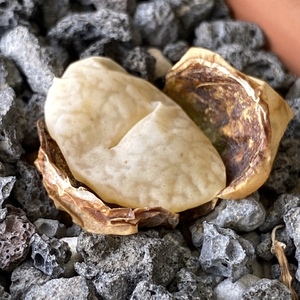
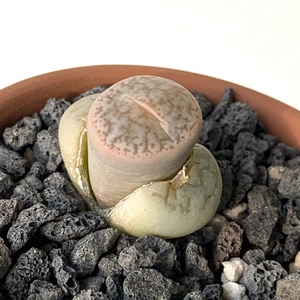

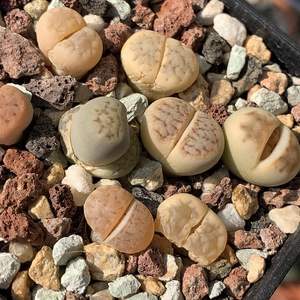
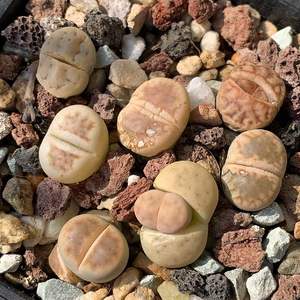


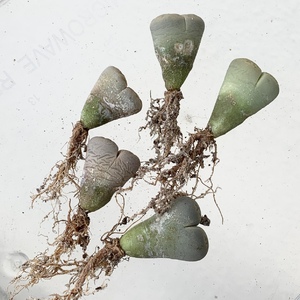
kensong
2019年10月27日

Finally the last surviving Lithops went to plant heaven.


kensong
2019年06月12日

One surviving Lithops




kensong
2019年02月06日

It's hard to balance their water needs when planted together. Some just seems to waste away and l've no idea why.




kensong
2019年01月12日

Roots looked okay so hopefully they will survive. Lesson - use porous topping and smaller pots so the media can dry faster.


kensong
2019年01月12日

Four casualties and I've no idea why.
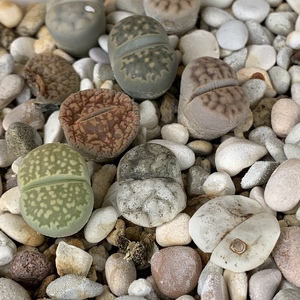

kensong
2019年01月08日

These seems to be doing well.
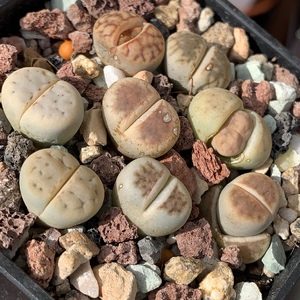

kensong
2018年12月16日

I just realised that Lithops need to be hydrated or it will wrinklw amd shrink. Don't wait until it wrinkle to water. And they need soil with more organic mix than succulents.
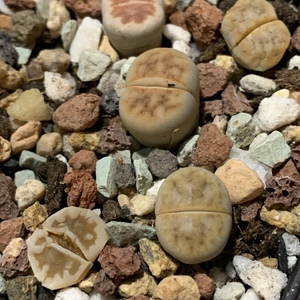

kensong
2018年12月03日

They do look like stones amongst the rainbow stones.
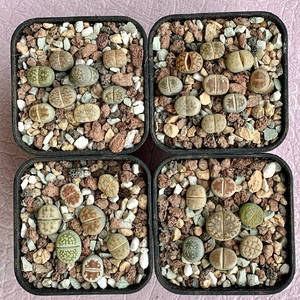

kensong
2018年12月03日

Finally potted all my Lithops from Holland. Hopefully they'll quickly establish their roots.
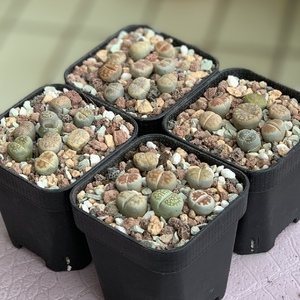
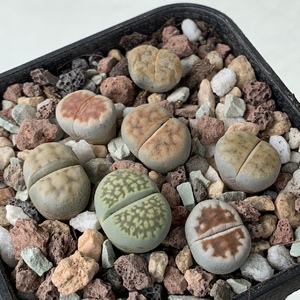


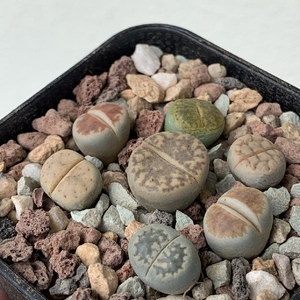
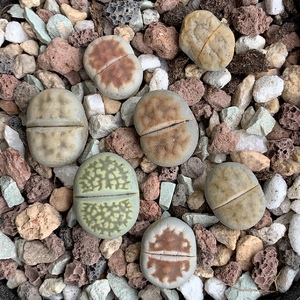
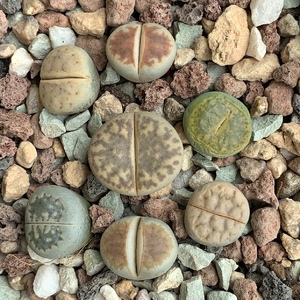
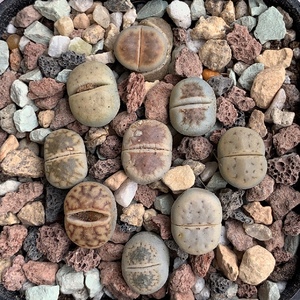
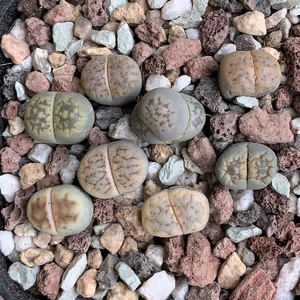









kensong
2018年12月02日

This is the technique I use for potting Lithops.
